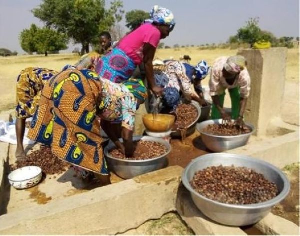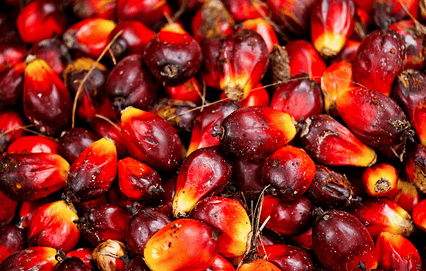
Climate change is threatening the existence of shea trees in the country’s northern parts – the Upper East, Upper West, Northern, North East and Savannah Regions.
Indeed, shea trees are seeing a very steep decline in production due to the prevailing harsh weather conditions which affect their yield.
According to recent figures, sheanut production has declined 10-20 percent and continues to nose-dive due to the impact of climate change and some other environmental factors.

While the country produces over 150,000 metric tonnes of shea nuts annually, of this quantity only about 30-40 percent is processed into shea butter domestically. The rest is exported as raw nuts, mainly to Europe, for refining.
Due to the COVID-19 pandemic, in 2020 sheanut exports dropped slightly. Only 75,000 metric tonnes worth US$70million made it out of Ghana.
However, in 2021 sheanut exports upticked again and has been increasing ever since. 85,000 metric tonnes of sheanuts valued at US$80million was exported in 2021, while in 2022 over 90,000 metric tonnes of sheanuts and shea butter worth approximately US$90million was exported.
It is to this end that the Ghana Shea Employers Association (GSEA) has renewed calls for an immediate ban on the export of raw shea nuts; citing the growing threat to local processors, value chain actors and the broader economy in northern regions.
They lament that the situation is negatively affecting pickers, processors and local businesses, many of which are women-led.
The association is therefore calling for participation by foreign investors, on condition that they establish processing factories in Ghana to promote job creation and boost domestic revenue.
Sheanuts, being one of the country’s leading non-traditional agricultural exports, present an opportunity to improve the incomes of rural women in northern Ghana, thereby helping to reduce the north-south development gap.
Rain patterns have become erratic and short-lived, thereby causing intermittent drought. This is taking a toll on peasant farmers who rely heavily on seasonal rainfall for their farming activities.
The effect of climate change is not limited to only food crops. Deep-rooted trees also succumb to the ever-rising temperatures.
Additionally, environmental degradation linked to unregulated harvesting, deforestation, rampant bushfires, logging of shea trees for firewood and production of charcoal and destruction of shea tree farms for large-scale agriculture are threatening biodiversity and accelerating climate change.
The post Editorial: Drought conditions in savannah belt threatening shea production appeared first on The Business & Financial Times.
Read Full Story









![‘I’m a Supplier’- Interdicted police officer admits selling opioids to youth [Video]](https://sportal365images.com/process/smp-images-production/pulse.com.gh/05052025/fc3b0efb-cfe0-47e6-9110-1dafcd7a834d.png)







Facebook
Twitter
Pinterest
Instagram
Google+
YouTube
LinkedIn
RSS